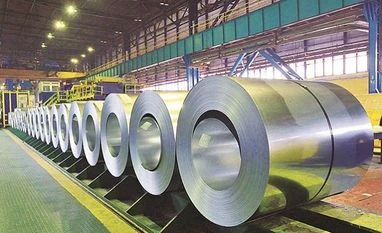Global industry body Worldsteel has said India's steel demand will take longer to replicate China's performance in terms of demand, as the former's growth model is very different, inward-looking and environmentally conscious.
"...India is likely to show an S-curve (the relationship between per capita income and per capita steel use) which will be less steep than that of China," said Adam Szewczyk, Head, Economic and Statistical Analysis, World Steel Association (worldsteel).
However, the other side of the coin might be that it will take longer for India's steel demand to peak compared to China
India's growth model is very different from that of China, he said, adding it is more service-oriented, inward- looking, more environmentally conscious with a stronger focus on equity and less controlled by a strong central government.
India's GDP during 2001-2016 grew at 7.34 per cent and steel use at 7.43 per cent, he said.
The same pattern in India in the future is unlikely, Szewczyk said, adding the country's steel demand has big potential considering its huge population and still low-level of infrastructure and housing development.
However, it is not expected that India will replicate China's explosive growth pattern. In last decade also, unlike India, the demand for steel in China grew at a rate that was much faster than GDP during the take-off period.
Worldsteel represents over 160 steel producers (including 9 of the world's 10 largest steel companies), national and regional steel industry associations, and steel research institutes. worldsteel members represent around 85 per cent of world steel production.
"...India is likely to show an S-curve (the relationship between per capita income and per capita steel use) which will be less steep than that of China," said Adam Szewczyk, Head, Economic and Statistical Analysis, World Steel Association (worldsteel).
However, the other side of the coin might be that it will take longer for India's steel demand to peak compared to China
Also Read
where the demand has increased dramatically from 2000, but then peaked in 2013, Szewczyk added.
India's growth model is very different from that of China, he said, adding it is more service-oriented, inward- looking, more environmentally conscious with a stronger focus on equity and less controlled by a strong central government.
India's GDP during 2001-2016 grew at 7.34 per cent and steel use at 7.43 per cent, he said.
The same pattern in India in the future is unlikely, Szewczyk said, adding the country's steel demand has big potential considering its huge population and still low-level of infrastructure and housing development.
However, it is not expected that India will replicate China's explosive growth pattern. In last decade also, unlike India, the demand for steel in China grew at a rate that was much faster than GDP during the take-off period.
Worldsteel represents over 160 steel producers (including 9 of the world's 10 largest steel companies), national and regional steel industry associations, and steel research institutes. worldsteel members represent around 85 per cent of world steel production.
)